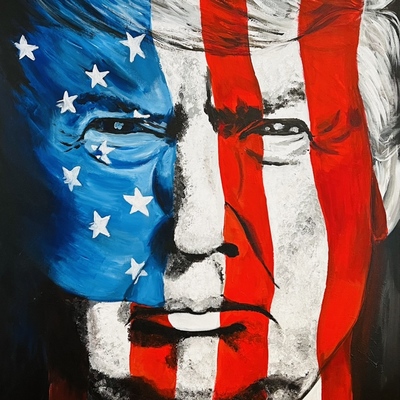Stay informed on the latest Truth Social posts from Donald Trump (@realDonaldTrump) without the doomscrolling. Consider it a public service for your mental health. (Why?)
- The United States has been 'ripped off' on trade for decades.
- The United States has been 'ripped off' on military arrangements for decades.
- These arrangements have cost the U.S. 'trillions of dollars'.
- The current situation is unsustainable and never was sustainable.
- Other countries should recognize they have had a 'free ride' from the U.S.
- The U.S. must now act to do what is 'right for America', and other countries should understand this.
The post's strong emphasis on trade imbalances and the 'trillions of dollars' cost suggests a potential future policy shift towards protectionist measures or renegotiation of trade deals. Such actions, like the imposition of tariffs or changes in defense spending allocations, directly impact corporate earnings, supply chains, and consumer purchasing power, all of which are significant drivers for S&P 500 performance. The broad nature of the claims affects various sectors.
The post highlights a perceived historical exploitation of the U.S. by other nations in trade and military agreements. It advocates for a rebalancing of these relationships, which could lead to diplomatic tensions or renegotiations of existing agreements, but does not contain explicit threats of military action or international conflict escalation. The rhetoric points towards policy shifts rather than imminent warfare.
- Commodities: A focus on trade rebalancing could disrupt global supply chains, potentially leading to increased costs for industrial metals like Copper due to trade friction, or reduced demand if global growth is impacted. Gold (XAU) could rise as a safe-haven asset if trade tensions escalate, signaling investor uncertainty. Oil (WTI) could be affected by changes in global economic growth forecasts or geopolitical shifts stemming from military policy re-evaluations. Short-Term Watchlist: XAU/USD price action reflecting risk aversion, potential for supply chain disruptions affecting industrial metal prices. Medium-Term Focus: Inflationary pressures from tariffs, global demand trends influenced by trade policy, and shifts in geopolitical risk premiums for energy.
- Currencies (Forex): A more assertive U.S. trade stance could lead to a stronger US Dollar Index (DXY) if it's perceived as benefiting the U.S. economy, or weaker if it sparks global trade wars and uncertainty. Pairs like USDCNH would be highly sensitive to U.S.-China trade relations. EURUSD could react to the broader health of global trade. Short-Term Watchlist: DXY movements reflecting shifts in risk sentiment, particularly concerning trade negotiations or tariff announcements. Medium-Term Focus: Central bank policy responses to trade-induced inflation/disinflation, capital flow shifts related to perceived trade advantages or disadvantages.
- Global Equities: S&P 500 and other global indices (e.g., STOXX 600, Nikkei 225, Hang Seng) would face significant impact. Companies with extensive international supply chains or significant export revenues would be particularly vulnerable to trade policy changes (e.g., tariffs). Defense sectors could be affected by military policy shifts. Overall risk tone would likely increase, potentially dampening equity valuations. Short-Term Watchlist: Futures open reactions to trade-related headlines, performance of multinational corporations, and defense sector stocks. Medium-Term Focus: Corporate earnings revisions based on new trade agreements, broader economic growth prospects, and investor appetite for risk.
- Fixed Income (Bonds): Increased trade tensions or geopolitical uncertainty could trigger a flight to safety, driving down U.S. 10Y and 2Y Treasury yields. Conversely, if trade protectionism leads to inflation, yields could rise. Credit spreads might widen if economic uncertainty increases or if specific sectors face trade-related pressure. Short-Term Watchlist: UST 10Y yield levels as a proxy for risk sentiment, changes in yield curve shape. Medium-Term Focus: Inflationary outlook influenced by trade policy, fiscal implications of military spending reviews, and overall investor demand for safe-haven assets.
- Volatility / Derivatives: The VIX would likely spike in response to increased uncertainty surrounding trade policy or geopolitical relations. Options positioning could reflect hedging against potential market downturns or volatility. Gamma risk might amplify moves as market participants react to headlines. Short-Term Watchlist: VIX levels and the VIX futures term structure for signs of heightened fear, changes in options open interest. Medium-Term Focus: Sustained volatility due to ongoing trade or geopolitical friction, impact on long-term investment strategies.
- Crypto / Digital Assets: Bitcoin (BTC) could behave as a risk-on asset initially if broader markets react negatively, but might also be viewed as a hedge against traditional financial system instability if trade wars escalate severely. Its correlation with tech stocks suggests vulnerability to overall market sentiment. Liquidity cycles would remain key. Short-Term Watchlist: BTC/USD price action, correlation to tech equity movements, and funding rates. Medium-Term Focus: Regulatory responses to market volatility, broader macro liquidity conditions, and the ongoing narrative of digital assets as alternative hedges.
- Cross-Asset Correlations and Systemic Risk: Such a narrative could lead to a breakdown in normal correlations if trade or geopolitical risks become dominant, potentially causing both equities and bonds to sell off if inflation is also a concern. Signs of liquidity stress or margin calls could emerge in the event of severe market disruption. Short-Term Watchlist: MOVE index reflecting bond market volatility, performance of junk bond ETFs, and any unusual co-movement between traditionally inverse assets. Medium-Term Focus: Potential for systemic financial stress from prolonged trade disputes, central bank intervention policies, and the resilience of market infrastructure.
- Retail Sentiment / Market Psychology: The post's direct and populist language could resonate with retail investors, potentially triggering shifts in sentiment or even speculative behavior in certain sectors (e.g., those perceived to benefit from 'America First' policies or those that could be targeted by foreign competition). Social media commentary would likely amplify discussion around these themes. Short-Term Watchlist: Social media trends and discussions related to trade policy, retail trading platform activity, and potential for specific stock rallies based on sentiment. Medium-Term Focus: The broader influence of political rhetoric on retail investment decisions and the potential for coordinated trading pushes.

